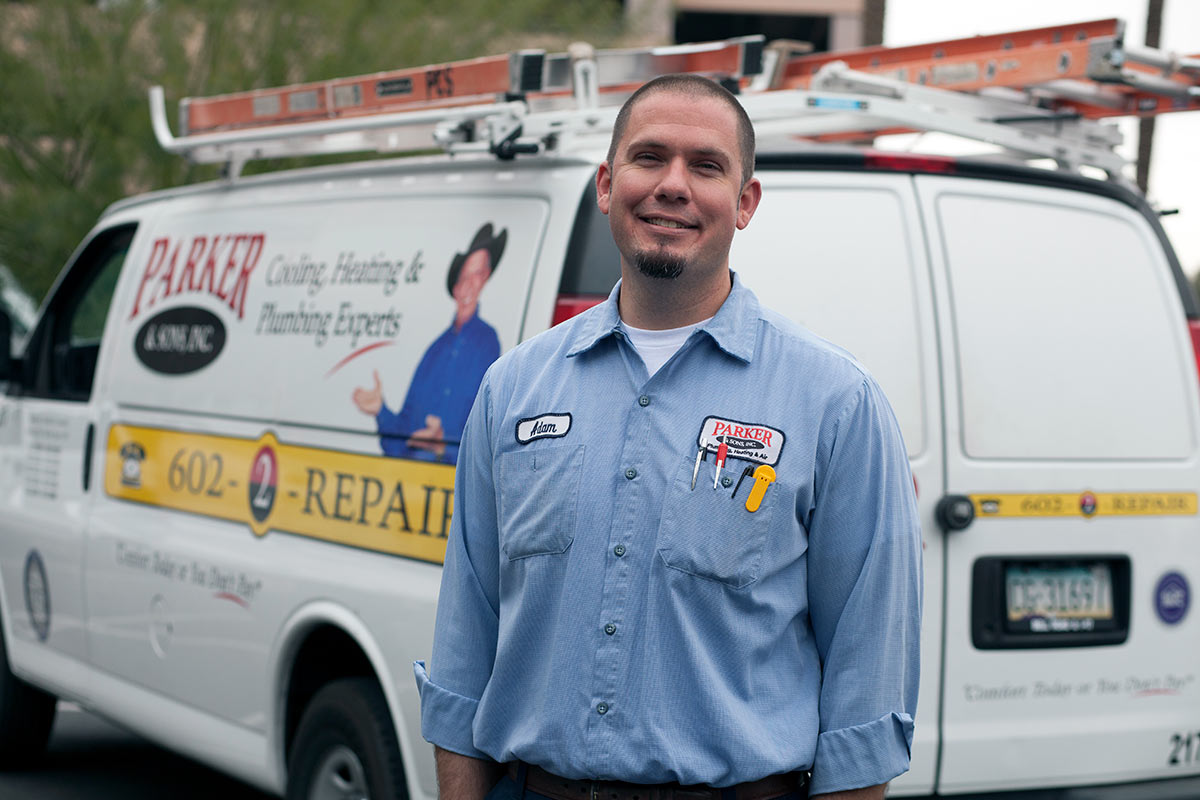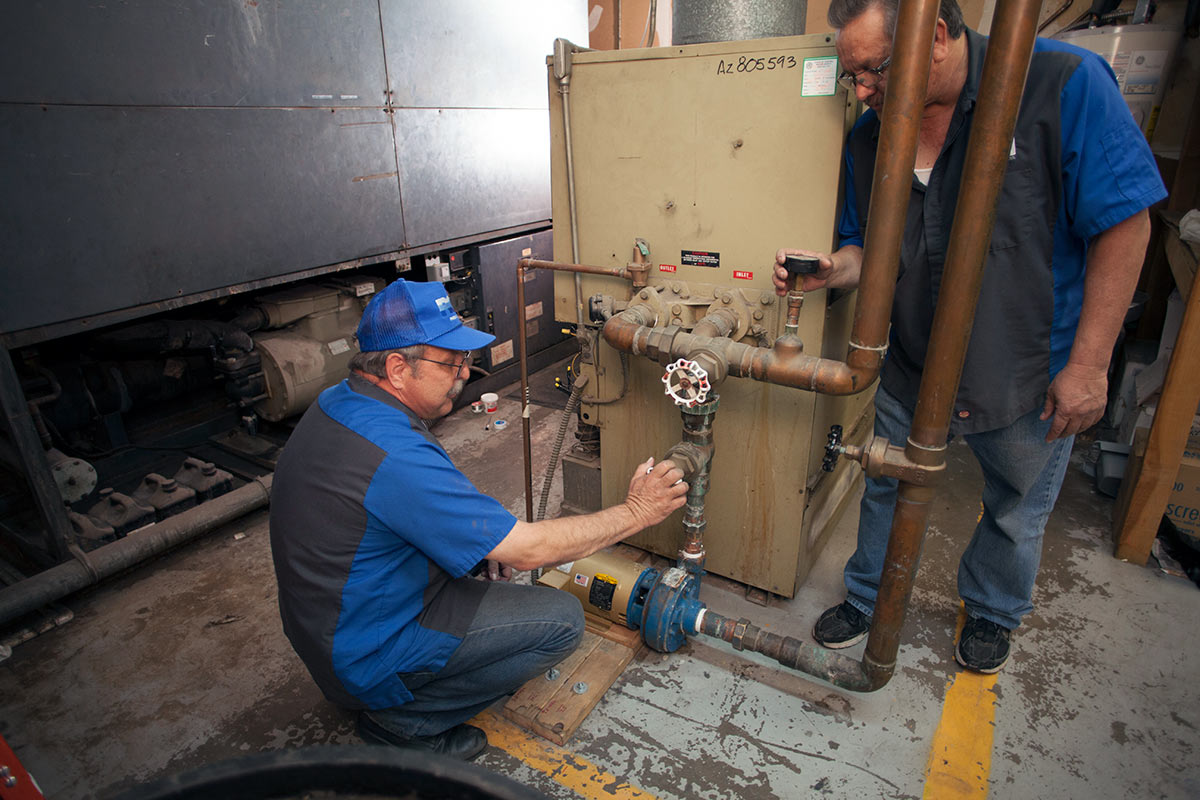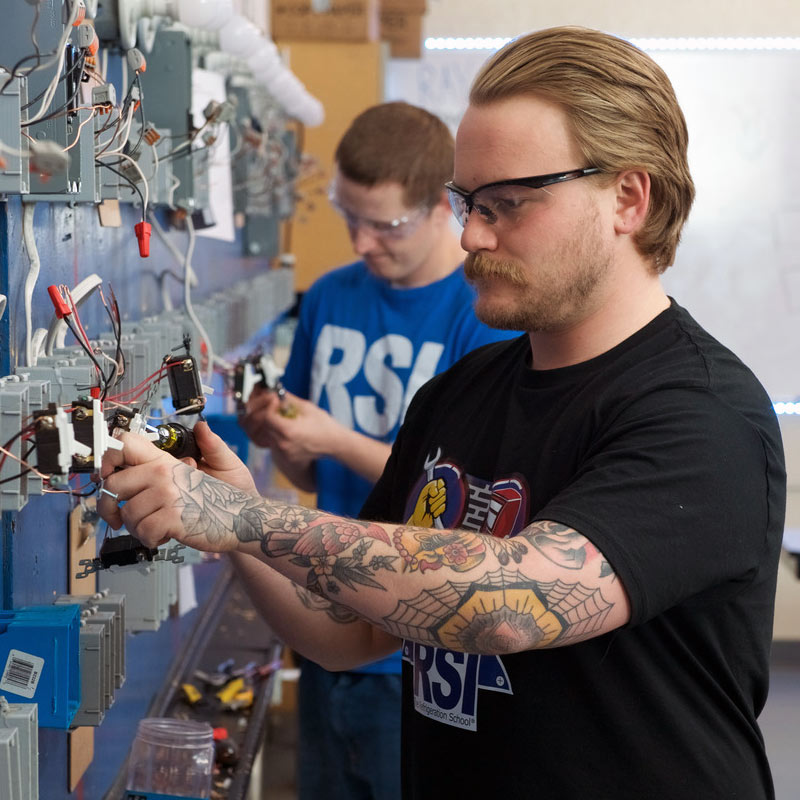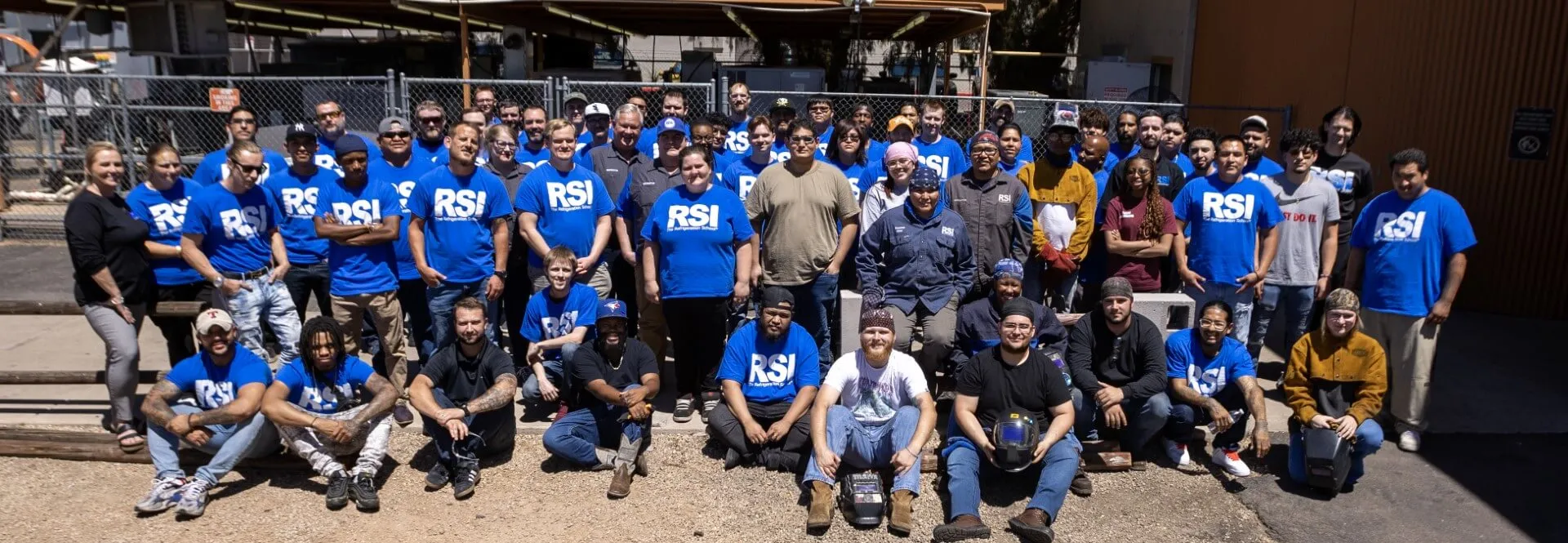Updated: 04/15/2024
What do HVAC technicians do? Where do HVAC technicians work?
How can I become an HVAC technician?
Whether you’re still in high school considering a career in HVAC or already training at a trade school, you may have questions like these.
For those still thinking about pursuing the trade, reading an HVAC technician career overview will be helpful.
If you’ve decided HVAC is a good career for you, then check out the resources below. They can help provide support for each stage of your journey to entering and finding success in the field of HVAC service and repair.
SECTION 1
HVAC Technician Career FAQ
What Do HVAC Technicians Do?
What HVAC technicians do can vary by position and industry, but generally, they install, maintain, repair and replace HVAC systems. HVAC is an acronym for heating, ventilation and air conditioning. When an “R” is added to the end, it means the tech may also work on refrigeration units.1
Where Do HVAC Technicians Work?
It’s hard to imagine a building that wouldn’t need some kind or heating or cooling system, and these days, most do have one. Consequently, HVAC technicians work just about everywhere:
- Homes
- Schools
- Factories
- Office buildings
- Hospitals1
What Are the Education Requirements for an HVAC Technician?
With the rise in popularity of the Internet of Things (IoT) and smart home technologies, HVAC/R equipment is becoming increasingly complex. As a result, many employers look for workers who’ve completed an HVAC training program at a trade school.1
HVAC certifications and licenses are either required or preferred in some states and industries.1
How Much Do HVAC Technicians Make?
As with job duties, how much an HVAC technician makes can depend on location, industry and several other factors. The annual mean salary for technicians in 2020 in the U.S. was $50,590. This means half of workers earned less and the other half more.1*
HVAC Technician Job Outlook
HVAC technician jobs will see 4% growth through 2029. This is much faster than average.1**

SECTION 2
Introduction to Basic HVAC/R Terminology
In order to work in an industry, you’ll need to speak its language. This can be challenging at first in a field filled with acronyms—including its name—and technical terminology.
Learn some of the terms of trade below.
The addition of energy to cause a rise in temperature is considered heating.2 Today, central heating is a common way people warm homes and buildings. These systems typically use hot water, warm air, heat pumps and electric resistance.3
AFUE
Furnaces and boilers are the heating systems found in most homes in the U.S. The efficiency of these systems is measured by the annual fuel utilization efficiency (AFUE). This is an assessment of how efficiently the boiler or furnace converts fuel energy to heat throughout one year.4
HSPF
Heat pumps utilize a reverse refrigeration cycle to warm buildings. They are also a popular choice for heating in the U.S.3 The Heating Seasonal Performance Factor (HSPF) evaluates the amount of energy a heat pump uses during a heating season.5
Oxygen can become depleted inside buildings over time, and harmful particulates can accumulate. Ventilation techniques clean the air. These include bringing fresh air inside and polluted air outside.3
Indoor Air Quality
The air inside a home or business can be up to 2 to 5 times more polluted than the air outside. This is why indoor air quality is so important. Good indoor air quality is achieved when a structure is well ventilated, the temperature and humidity are set at a comfortable level and pollutants are filtered out.6
Air Filters
Air filters remove contaminants from indoor air. There are several different types of air filters, including disposable, washable and high-efficiency. Changing air filters once a month is crucial to ensuring optimal performance.3,7
Indoor space cooling is known as air conditioning. Air conditioning systems typically consist of a compressor, condenser, expansion valve and evaporator. These parts work together, along with refrigerant, to bring hot outdoor air into a building, cool it and pump it throughout the structure or to specific rooms.8
SEER
The Seasonal Energy Efficiency Ratio (SEER) is an assessment of how well an air conditioner cools a building. A SEER rating above 13 indicates that a unit operates at a high efficiency. Depending on the region, the Department of Energy (DOE) requires new A/C units to have a minimum SEER rating of 13 or 14. In 2023, the DOE will enact new minimum energy efficiency standards, requiring a SEER rating of 14 to 15.9,10
Cooling Load
A building’s insulation, construction, and amount of light can all impact the level of heat in a building.11
These factors are calculated to determine how much heat an HVACR system must remove. Collectively they are known as the cooling load.11
While most air conditioning systems are based on the principle of refrigeration, the equipment in this part of the field typically deals with keeping food cold. Temperature sets air conditioning and refrigeration apart: air conditioning applies for spaces above 60°F, and refrigeration for those below 60°F.3
Second Law of Thermodynamics
Integral to the science of refrigeration, this law states that heat naturally travels from warm areas to cold ones. In A/C and refrigeration units, the condenser forces heat to move in the opposite direction, from cold to hot.12
Refrigerant
Refrigerants are chemicals that serve as the working fluid for refrigerators, air conditioners and heat pumps. Their main property is the ability to change from a liquid to a gas at low temperatures. They assist in the heat transfer process.13
Still stumped on some of the HVACR terminology out there? Reading a glossary of HVAC terms may provide the right information.
SECTION 3
Resources to Help You Along the HVAC Technician Career Path
Where could you train to become an HVAC technician? How might you fund this investment in your future? What can you do to optimize your time while in HVAC school?
As these common questions suggest, you’ll likely need different information at each step on the path to working and thriving in the field of HVAC/R.
Check out the resources below. You may find them helpful—wherever you’re at in the HVAC career path.
How High School Students Can Get Ready for a Career in HVAC
Did you know you can start preparing for a career in HVAC in high school?
The Bureau of Labor Statistics recommends taking physics, math and vocational education. These classes, along with chemistry and a basic understanding of plumbing, electrical work and electronics can all be helpful in getting ready for HVAC school.14
Checking out postsecondary program course offerings can also give you a better idea of what you’ll learn in HVAC school and how to get a head start on those subjects in high school.
Perhaps the most important thing you can do, however, is to graduate or pass the GED test, because many trade schools require a high school diploma or equivalent.15
Where to Find Funding for Your Training Investment
Wondering how to fund your HVAC training investment? You have options. Federal, state and local governments, as well as schools and private organizations, may offer financial aid to help you pay for trade school.16
Your first step may be to find out how much trade school costs. Adding up tuition and the costs for textbooks, equipment, housing and other expenses can give you a rough idea.
Next, you may want to find tips on how to fund your vocational training: Talk to your school’s financial aid department.
Applying for federal financial aid.***
Determining if you’re eligible for veterans’ benefits.***
How to Boost Productivity While in HVAC School
HVAC training can be as challenging as it is exciting, and there’s so much to learn. How can students make the most of their time?
Some schools offer resource guides with information about financial aid, student housing and career services to make it easy for students to find the help they need.
Forming good study habits and creating study plans can help students optimize their time.
Those who want to earn while they learn may find working while in trade school beneficial. But
students who are raising children at the same time may need to adopt a serious time management strategy.
Help with HVAC Certification and Licensing
Technicians need to learn which HVAC certifications and licenses they would need or want. They have many types of HVAC certification to choose from:
- EPA Section 608 Technician Certification
- Industry certifications like HVAC Excellence and NATE
- State and local licensing options
Once you decide which route to go, make sure to prepare. Try these free online learning resources for HVAC students.
Resources for HVAC Career Success
HVAC Job Search Resources
After you’re trained and certified in HVAC/R best practices, it’s time to start working in the field. Searching for and landing a job can be challenging in any field, and HVAC/R service and repair is no exception. During this stage in your HVAC career path, job search resources can really come in handy.
For instance, it could be helpful to learn where HVAC contractors are recruiting technicians.
With so much of the job application process happening online these days, a polished skilled trades resume can help you make a good first impression.
When you land an HVAC job interview, be sure to prepare by dressing appropriately, researching the company and position and practicing your responses to common interview questions. You might also find it helpful to read tips for:
HVAC Job Search Resources
Talking to customers on a regular basis can be a new—and for some, challenging—part of working in the field after HVAC training.
Whether you have the gift of the gab or are the quiet type, dressing professionally, showing up on time and communicating effectively can all make for a smoother HVAC service call.
Beyond making a good first impression, delivering trustworthy and reliable work on a consistent basis can also help you build trust with your customers.
Ways to Advance Your HVAC Career
After successfully entering the HVAC industry, there are steps you can take to stay current with new trends and innovations, as well as advance your career.
These include joining HVAC/R trade associations, attending industry trade shows and conferences, and checking reputable HVAC job search sites for better positions.
Within the field are numerous opportunities for career advancement, whether you want to climb the career ladder within the service sector or move into design and engineering or project management roles.

SECTION 4
Learn More about HVAC Training
If you still have questions about HVAC training and becoming an HVAC technician, you may find speaking with a representative for The Refrigeration School helpful. Give us a call at 888-671-5803.
*Phoenix Area’s annual mean wage for Heating, Air Conditioning, and Refrigeration Mechanics and Installers (499021) reported by BLS as of May 2020 http://data.bls.gov/oes. Average starting salary for Refrigeration Technologies is $35,670 for RSI graduates employed during the 12 month period of 7/1/19-6/30/20.
** According to BLS data Arizona employed 10,000 Heating, Air Conditioning, and Refrigeration Mechanics and Installers (499021) through May 2020 http://data.bls.gov/oes.
***Available to those who qualify.

Have Questions?
A team of advisors is available to answer questions you may have.
M – Th: 7AM – 7:30PM (PST)
F: 7AM – 4PM (PST)
Sat: 8AM – 12PM (PST)
Additional Sources
1 https://www.bls.gov/ooh/installation-maintenance-and-repair/heating-air-conditioning-and- refrigeration-mechanics-and-installers.htm
2 https://www.dictionary.com/browse/heating
3 Title: Fundamentals of HVAC; Authors: Carter Stanfield and David Skaves; Air-Conditioning, Heating, and Refrigeration Institute; Second Edition; Textbook page 5.
4 https://www.energy.gov/energysaver/home-heating-systems/furnaces-and-boilers
5 https://www.lennox.com/buyers-guide/guide-to-hvac/glossary/heating-seasonal- performance-factor-hspf
6 https://www.epa.gov/report-environment/indoor-air-quality
7 https://www.cnet.com/how-to how-often-you-should-change-your-ac-filter/
8 https://home.howstuffworks.com/ac2.htm
9 https://www.trane.com/residential/en/resources/whats-good-seer- rating/#:~:text=A%20higher%20SEER%20rating%20provides,SEER%20up%20to%2022%20SEER
10 https://www.eia.gov/todayinenergy/detail.php?id=40232 11https://basix.nsw.gov.au/iframe/thermal-help/heating-and-cooling-loads.html
12 https://phys.libretexts.org/Bookshelves/College_Physics/Book%3A_College_Physics_(OpenSt ax)/15%3A_Thermodynamics/15.05%3A_Applications_of_Thermodynamics- _Heat_Pumps_and_Refrigerators
13 https://www.dictionary.com/browse/refrigerant
14 https://www.bls.gov/ooh/installation-maintenance-and-repair/heating-air-conditioning-and- refrigeration-mechanics-and-installers.htm#tab-4
15 https://education.seattlepi.com/advantages-ged-1135.html
16 https://studentaid.gov/sa/types

